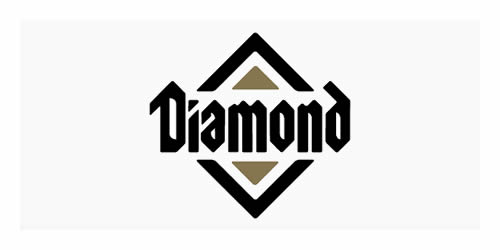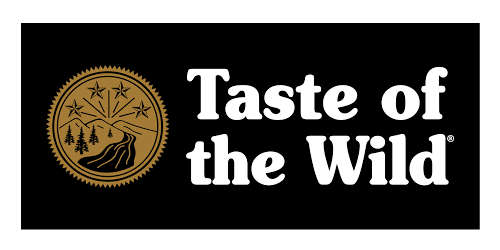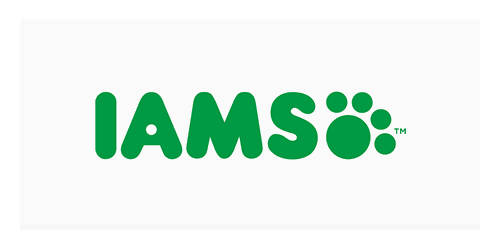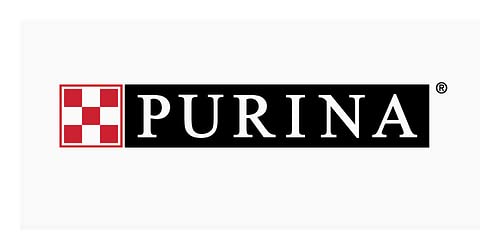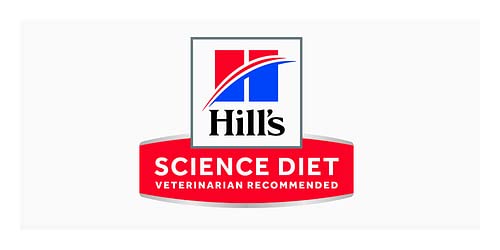Dry dog food is a popular type of dog food that comes in a range of formulations and flavors. It typically contains a mix of protein, carbohydrates, fats, vitamins, and minerals, and is often designed to meet specific nutritional needs based on a dog’s age, breed, and activity level. Dry dog food is convenient to store and feed, and may promote dental health by helping to scrape plaque from dogs’ teeth.
Best dry dog food in 2023
No products found.
No products found.
No products found.
Dry dog food brands
Dry Dog Food Frequently Asked Questions
What is dry dog food?
Dry dog food, also known as kibble, is a popular type of dog food that is made by mixing and cooking ingredients such as meat, grains, vegetables, and vitamins into a dry, crunchy form. It is a convenient and affordable option for feeding dogs, and can be stored for long periods of time without spoiling. Some brands of dry dog food also include additional ingredients like probiotics, antioxidants, and joint supplements to promote overall health and wellness. However, it’s important to carefully read the label and choose a high-quality, balanced dry dog food that meets your dog’s specific nutritional needs.
What dry food are good for dogs?
When it comes to choosing a dry food for your dog, there are several factors to consider, including your dog’s age, breed, size, and any specific health concerns they may have. Here are some general guidelines to keep in mind:
1- Look for a high-quality protein source as the first ingredient: Dogs are primarily carnivores, so their diet should be based on animal protein. Look for a dry food that lists a high-quality source of animal protein, such as chicken, beef, lamb, or fish, as the first ingredient.
2- Avoid fillers and by-products: Fillers like corn, wheat, and soy are often used in dog food to bulk up the product and keep costs down. However, these ingredients offer little nutritional value and can be difficult for dogs to digest. By-products, such as chicken or beef meal, may also be used, but it’s best to look for specific named meat sources instead.
3- Choose a formula appropriate for your dog’s life stage: Dog food formulas are often tailored to different life stages, such as puppies, adult dogs, or seniors. Make sure you select a formula that’s appropriate for your dog’s age and activity level.
4- Consider any special dietary needs: If your dog has any specific health concerns, such as allergies or sensitivities, consult with your veterinarian to find a suitable dry food that meets their needs.
5- Read the label and ingredients carefully: Make sure to read the label and ingredients list carefully to ensure that the dry food you choose meets your dog’s nutritional needs.
Some popular brands of dry dog food that are generally well-regarded by pet owners and veterinarians include Taste of the Wild, Royal Canin, Hill’s Science Diet, Blue Buffalo, and Purina Pro Plan, among others. However, it’s important to note that every dog is unique and may have different dietary needs, so it’s always best to consult with your veterinarian to determine the best dry food for your individual dog.
Dog stopped eating dry food
There could be several reasons why a dog may stop eating dry food. Here are some common ones:
1- Dental issues: Dogs can experience pain or discomfort while chewing due to dental problems, which can make them reluctant to eat dry food.
2- Health problems: Dogs with health issues, such as gastrointestinal problems or kidney disease, may find it difficult to digest dry food.
3- Change in diet: Dogs can be creatures of habit, and sudden changes in their diet can cause them to stop eating. If you have recently changed your dog’s food, they may need time to adjust.
4- Environmental factors: Sometimes, external factors such as stress, anxiety, or a change in their environment can cause a loss of appetite in dogs.
5- Spoiled food: If the food has gone bad or spoiled, dogs may refuse to eat it.
If your dog has stopped eating dry food, it’s best to consult with your veterinarian to rule out any underlying medical issues. They may recommend a change in diet or suggest a different type of food that may be more appealing to your dog.
Adding water to dry dog food
As pet owners, we all want to ensure that our furry friends are happy and healthy. One way to promote your dog’s health is by making sure that they are properly hydrated. While offering clean drinking water is a given, many pet owners also wonder if it is a good idea to add water to dry dog food. In this article, we will explore the benefits of adding water to dry dog food and how to do it properly.
First, let’s consider why adding water to dry dog food might be beneficial. For one, it can aid in digestion. When dry food is moistened, it becomes easier to chew and swallow, reducing the risk of choking or discomfort. Additionally, the added moisture can help soften the food, making it easier for your dog’s stomach to break down and absorb the nutrients.
Another benefit of adding water to dry dog food is increased hydration. While dogs can obtain some water from their food, a majority of their daily water intake should come from drinking water. By moistening their food, you can help supplement their water intake, especially if they are not drinking enough water on their own. This can help prevent dehydration, which can lead to a host of health problems.
Lastly, adding water to dry dog food can make the food more appealing to picky eaters. Some dogs prefer wet food over dry food and may be more inclined to eat if the dry food is moistened. This can be especially helpful if your dog has a decreased appetite or is recovering from an illness.
Now that we’ve explored the benefits of adding water to dry dog food, let’s discuss how to do it properly. It’s important to note that adding too much water can make the food soupy and unappetizing. As a general rule, start with a small amount of water and gradually increase the amount until you find the right consistency that your dog prefers. A good ratio to start with is one part water to three parts dry food. Allow the food to sit for a few minutes to absorb the water before serving. Additionally, any moistened food should be discarded after a few hours if not eaten, to avoid spoilage or contamination.
In conclusion, adding water to dry dog food can have many benefits for your furry friend. From aiding digestion to increasing hydration, it’s a simple way to promote their health and well-being. Just be sure to introduce the water gradually and avoid over-moistening the food to keep it palatable. As always, consult with your veterinarian if you have any concerns about your dog’s diet or health.
Best dry dog food for sensitive stomach
Dogs with sensitive stomachs can experience a range of digestive issues, including vomiting, diarrhea, and flatulence, when fed the wrong type of food. Choosing the right dry dog food for a sensitive stomach can help prevent these issues and promote your dog’s overall health. Here are some of the best dry dog foods for dogs with sensitive stomachs:
1- Hill’s Science Diet Sensitive Stomach and Skin: This dry dog food is specially formulated with easy-to-digest ingredients, such as chicken and rice, to promote healthy digestion. It also contains prebiotic fiber to support a healthy gut microbiome and Omega-6 fatty acids to nourish the skin and coat.
2- Purina Pro Plan Sensitive Skin and Stomach: This dry dog food contains salmon as the primary protein source, which is easy to digest and less likely to cause allergic reactions. It also contains rice and oatmeal for easy digestion and prebiotic fiber for gut health.
3- Royal Canin Digestive Care: This dry dog food is formulated with highly digestible proteins and carbohydrates, such as rice and barley, to support healthy digestion. It also contains a blend of prebiotics and fibers to support a healthy gut microbiome and improve stool quality.
4- Blue Buffalo Basics Limited Ingredient Diet: This dry dog food contains a limited number of high-quality ingredients, such as turkey and potato, to reduce the risk of digestive upset. It also contains pumpkin to support healthy digestion and Omega-3 and 6 fatty acids for a healthy skin and coat.
5- Wellness Simple Limited Ingredient Diet: This dry dog food is made with a limited number of simple, high-quality ingredients, such as salmon and potato, to minimize the risk of digestive upset. It also contains prebiotics and probiotics to support healthy digestion and immune function.
When selecting a dry dog food for a sensitive stomach, it’s important to read the ingredients list and choose a food that contains high-quality protein sources and easily digestible carbohydrates. Additionally, it’s important to introduce new foods gradually to allow your dog’s digestive system to adjust. As always, consult with your veterinarian to determine the best diet for your dog’s individual needs.
Is it OK for dogs to only eat dry food?
Yes, it is generally okay for dogs to only eat dry food, provided that the food meets their nutritional needs. Dry dog food, also known as kibble, is a convenient and affordable option for many pet owners. Most high-quality dry dog foods contain a balanced mix of protein, carbohydrates, fats, vitamins, and minerals, which are essential for a dog’s overall health.
However, it’s important to note that some dogs may have specific dietary needs or medical conditions that require a specialized diet. For example, dogs with certain medical conditions, such as kidney disease or diabetes, may require a special diet prescribed by a veterinarian. Additionally, some dogs may have food sensitivities or allergies, which may require a limited ingredient or grain-free diet.
If you choose to feed your dog only dry food, it’s important to select a high-quality, nutritionally balanced brand that meets your dog’s needs. Read the ingredients list carefully and choose a brand that contains real meat as the first ingredient, rather than meat by-products or fillers. Additionally, consider your dog’s age, size, and activity level when selecting a dry food, as these factors can affect their nutritional requirements.
While it is generally okay for dogs to only eat dry food, it’s important to remember that dogs also need access to fresh water at all times to stay hydrated. Ensure that your dog always has access to clean drinking water and monitor their food and water intake to ensure they are getting the appropriate amount. If you have any concerns about your dog’s diet or health, consult with a veterinarian for personalized advice.
Do vets recommend dry food?
Yes, many veterinarians do recommend dry dog food as a part of a healthy and balanced diet for dogs. High-quality dry dog food can provide a complete and balanced source of nutrition for dogs, with the right balance of protein, carbohydrates, fats, vitamins, and minerals to support their overall health.
Dry dog food has several advantages over other types of dog food. It is convenient and easy to store, it doesn’t spoil as quickly as wet food, and it can help maintain dental health by reducing plaque and tartar buildup. Additionally, dry dog food is often more affordable than other types of dog food.
That being said, it’s important to note that not all dry dog foods are created equal. Some brands may contain low-quality ingredients, such as fillers or meat by-products, which can be less nutritious for dogs. It’s important to select a high-quality, nutritionally balanced brand of dry dog food and to read the ingredients list carefully.
In addition to dry food, many veterinarians also recommend incorporating wet food, fresh foods, or supplements into a dog’s diet to provide additional nutrients and variety. Every dog is different, and their nutritional needs can vary based on their age, size, and activity level. If you have any questions or concerns about your dog’s diet, it’s always a good idea to consult with a veterinarian for personalized advice.
What are the pros and cons of dry dog food?
Dry dog food, also known as kibble, has several advantages and disadvantages. Here are some of the pros and cons of feeding your dog dry food:
Pros:
1- Convenience: Dry dog food is easy to store, doesn’t require refrigeration, and can be served quickly and easily.
2- Dental health: Dry dog food can help clean a dog’s teeth and reduce the buildup of plaque and tartar.
3- Affordability: Dry dog food is often more affordable than other types of dog food.
4- Shelf life: Dry dog food has a longer shelf life than wet food and doesn’t need to be refrigerated.
5- Variety: There are many different types of dry dog food available, including formulas designed for specific life stages or health conditions.
Cons:
1- Lack of moisture: Dry dog food typically contains less moisture than wet food, which can lead to dehydration and other health problems if a dog doesn’t drink enough water.
2- Quality concerns: Not all dry dog foods are created equal, and some brands may contain low-quality ingredients or fillers that can be less nutritious for dogs.
3- Digestibility: Some dogs may have difficulty digesting dry dog food, which can lead to digestive issues such as bloating, gas, and diarrhea.
4- Allergies: Some dogs may be allergic or sensitive to certain ingredients in dry dog food, such as grains or meat by-products.
5- Taste: Some dogs may prefer the taste and texture of wet food over dry food.
Overall, dry dog food can be a convenient and affordable option for many pet owners, but it’s important to select a high-quality brand and monitor your dog’s health and hydration levels. Additionally, incorporating other types of food, such as wet food or fresh foods, can provide additional nutrients and variety to your dog’s diet. It’s always a good idea to consult with a veterinarian to determine the best diet for your individual dog’s needs.
